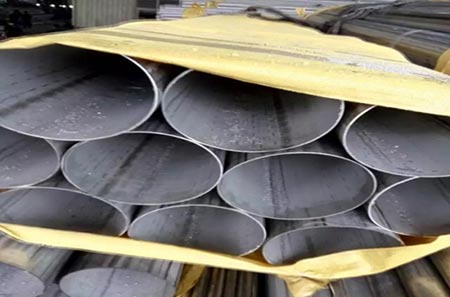How do you weld stainless steel tubing?
Welding stainless steel tubing requires specific techniques to ensure strong, corrosion-resistant joints. Here’s a step-by-step guide:
Materials and Tools Needed:
- Stainless steel tubing
- TIG welding machine (GTAW - Gas Tungsten Arc Welding)
- Welding helmet and protective gear
- Tungsten electrode
- Stainless steel filler rod (if needed)
- Argon gas for shielding
- Angle grinder or wire brush
- Clamps and fixtures
- Measuring tools
- Sandpaper or flap disc
Preparation:
1. Clean the Tubing: Use a wire brush or angle grinder with a flap disc to clean the area to be welded. Stainless steel must be free from contaminants like oil, grease, and dirt.
2. Cut the Tubing: Use a saw or tubing cutter to cut the tubing to the desired length. Ensure the cuts are clean and square.
3. Fit-Up: Align the pieces of tubing to be welded. Use clamps or fixtures to hold them in place. Proper alignment ensures a stronger weld.
Welding Process:
1. Set Up the TIG Welder:
- Amperage: Adjust the amperage based on the thickness of the tubing. For thin stainless steel, a lower amperage setting is necessary.
- Gas Flow: Set the argon gas flow rate typically between 15-20 CFH (cubic feet per hour).
2. Tungsten Electrode Preparation:
- Use a sharp tungsten electrode for a precise arc.
- Choose the correct diameter of the tungsten electrode based on the tubing thickness.
3. Start Welding:
- Tack Weld: Begin by making tack welds to hold the pieces together. This helps maintain alignment during the welding process.
- Weld: Start welding by striking an arc and forming a puddle. Move the torch in a circular or weaving motion to distribute the heat evenly. If using a filler rod, dip it into the leading edge of the weld pool.
4. Shielding Gas: Maintain consistent coverage of argon gas over the weld area to prevent oxidation.
5. Cooling: Allow the weld to cool naturally. Avoid using water or forced air, as this can cause thermal shock and weaken the weld.
Post-Weld Treatment:
1. Inspect the Weld: Check for any defects such as cracks, porosity, or undercutting. The weld should be smooth and uniform.
2. Clean the Weld: Use a wire brush or stainless steel cleaner to remove any discoloration or oxidation.
3. Passivation: For enhanced corrosion resistance, consider passivating the weld. This involves treating the surface with an acid solution to remove free iron and other contaminants.
Tips:
- Practice: Welding stainless steel tubing requires precision. Practice on scrap pieces before working on your project.
- Consistent Speed: Maintain a consistent travel speed to ensure even heat distribution and penetration.
- Heat Control: Avoid excessive heat input to prevent warping or distortion of the tubing.
By following these steps, you can achieve strong, high-quality welds on stainless steel tubing.
Previous: >> Can stainless steel pipe be welded? Next: >> What is the thickness of stainless steel tubing?







